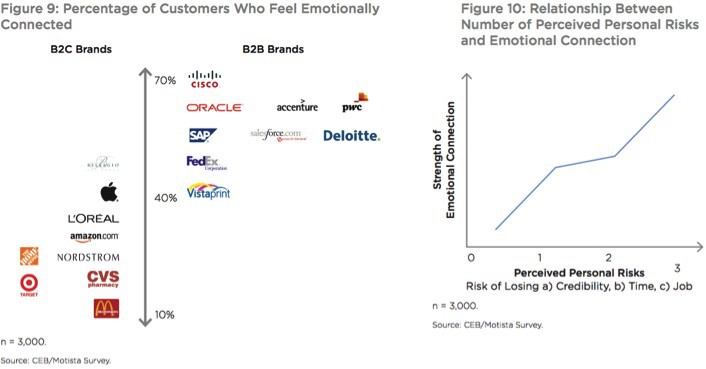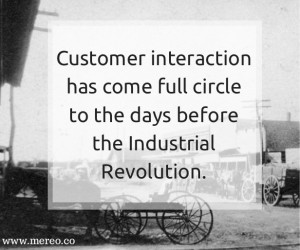A seismic shift is happening in the way we do business, and Ram Charan, author of a recent Fortune article has called it “the most sweeping business change since the Industrial Revolution.”
“…algorithms are dramatically changing both the structure of the global economy and the nature of business. Though still in its infancy, the use of algorithms has already become an engine of creative destruction in the business world, fracturing time-tested business models and implementing dazzling new ones. The effects are most visible so far in retailing, creating new and highly interactive relationships between businesses and their customers, and making it possible for giant corporations to deal with customers as individuals.”
In B2C transactions, consumers have gone from a category or customer type, to an individual who is not only noticed and heard, but expecting to be catered to. The real-time interactions that take place via social media, and personalized customer profiles created through algorithms and behind-the-scenes data collecting, have changed the way in which consumers expect to be engaged. Customer interaction has come full circle to the days before the Industrial Revolution.
“Indeed, the math house is shaping up as a new stage in the evolution of relations between businesses and consumers. The first stage, before the Industrial Revolution, was one-to-one transactions between artisans and their customers. Then came the era of mass production and mass markets, followed by the segmenting of markets and semi-customization of the buying experience. With companies such as Amazon able to collect and control information on the entire experience of a customer, the math house now can focus on each customer as an individual. In a manner of speaking, we are evolving back to the artisan model, where a market “segment” comprises one individual.”
What does this mean for B2B? Understand, embrace and get personal.
Personalized B2C experiences have created expectations for prospects in B2B environments, and require sales representatives adapt their selling approach.
Many people would assume B2C transactions are more personal and made with more emotion than B2B transactions. A recent report by Google and the Corporate Executive Board indicates the opposite may in fact be true:
Below, Figure 9 shows B2B customers are actually more emotionally connected to brands than B2C customers.
Digging deeper, the high level of emotionality in B2B is not so surprising. B2B purchases entail personal risks—far more than most B2C purchases. B2B purchase stakeholders fear:
- Losing time and effort if a purchase decision goes poorly,
- Losing credibility if they make a recommendation for an unsuccessful purchase, and
- Losing their job if they are responsible for a failed purchase.
Moreover, the more personal risks a purchase entails, the more emotional buyers feel—and the more they attach to brands that can provide value and eliminate risk (Fig. 10).

B2B purchasing decisions are personal, and sales representatives need to treat them that way by connecting with customers on a deeper level. Messaging and marketing need to speak directly to the person, instead of to the company. Sales teams need to know their customers as more than numbers and entities, and create content that is compelling, relevant and valuable.
Successful B2B sellers ignite the business, financial and personal pains of their buyers – and it’s that personal pain threshold that matters most. Because the process is emotional, building value-based relationships needs to be prioritized over selling. Value-based relationships are predicated on providing valuable insight, expertise and solutions that focus on the customer’s specific and unique needs. Through these relationships, trust is built and sales teams are able to better understand how to serve their customers. Sales representatives should work to create a memorable and valuable experience their customers are not receiving from any other company.
Personalizing strategies often requires investing in necessary go-to-market approaches that allow companies to create customer profiles (aka buyer personas), where they are able to track each customer’s journey individually. For B2B sellers, this personal engagement isn’t going to be a luxury much longer; soon it will be expected. This shift requires sales executives take a step back to a time to when serving the customer was their first priority.
